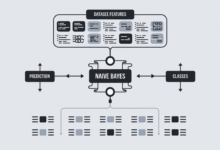In the panorama of a rapidly evolving digital age, tech innovation emerges as a predominant factor influencing every echelon of human existence and societal operation. This relentless progress brings to fore a multitude of path-breaking developments, necessitating an exploration into the fresh trends penetrating the frontier of technology innovation. We journey through how these transformative inventions are overhauling sectors, from business landscapes to the healthcare arena, educational paradigms, and beyond. This scrutiny extends to dissecting the challenges, surprises and risks that accompany innovation, while simultaneously unveiling the cardinal roles played by the public and private sectors in orchestrating these strides. Anchoring ourselves in the present, we set sail into the future, anticipating what lies ahead for tech innovation, backed by robust data analysis and enlightened foresight.
Emerging Trends in Tech Innovation
Emergent Trends: Technology and the Innovation Landscape
As a noteworthily expansive field of study and practical application, technology continues to reign supreme in shaping human society in diverse sectors. This article is poised to bring to light some of the emerging trends that promise to profoundly transform the landscape of technology innovation.
Artificial intelligence (AI) has undeniably stepped into the limelight as a key driver of technological innovation. The foresight for this technological marvel to even approximate, let alone surpass, human cognitive abilities has sparked vigorous debates. Machine learning, a subset of AI, is already demonstrating impressive intellectual dexterity in data analysis and prediction models.
Advancements in Internet of Things (IoT) technology will also significantly revolutionize our day-to-day experiences. IoT devices are steadily weaving an intricate web of interconnectedness that extends beyond our smartphones and computers. Everyday objects — appliances, vehicles, even clothing — are now becoming part of a vast network of responsive technology, designed to make our lives more convenient and streamlined.
Another noteworthy emergent trend is Nanotechnology — the science, engineering, and application of structures and devices on the nanometer scale. This discipline offers mesmerizing possibilities, such as the fabrication of materials with enhanced properties and the creation of extremely efficient, miniaturized devices. The advent of nanomedicine, for instance, could lead to breakthroughs in targeted drug delivery systems and regenerative medicine.
Blockchain technology and its offshoot cryptocurrencies continue to make headlines, yet their potential extends far beyond digital finance. Imagine a world where contracts are self-executing and supply chains are completely transparent and efficient. This is only a glimpse into the future defined by decentralization and secure peer-to-peer networks.
Quantum computing, heralded by some as the next frontier in technology innovation, is also reshaping scientific thought and research. Harnessing the esoteric properties of quantum physics, quantum computers may soon leapfrog the computational power of traditional supercomputers, opening doors to new algorithms, cryptographic systems, and scientific simulations.
In conclusion, technological innovation, as vast an area as it is, constantly morphs and evolves. Exponential growth areas such as AI, IoT, nanotechnology, blockchain, and quantum computing stand as testament to this continuous evolution. Each trend, groundbreaking in its own right, offers a captivatingly fresh canvas for technologists, academicians, and scientists alike. Embracing these emergent trends and their potential disruptions is integral to thriving in the swiftly changing technological landscape. Certainly, such a journey requires open, agile minds perpetually on the brink of innovative thought and scientific discovery.

Transformative Impact of Tech Innovation
Continuing from the discussions of radical computing technologies, such as quantum computing and Artificial Intelligence (AI), delving deeper into technological innovation reveals an organic nexus of transformation in various sectors. Indubitably, the growth and adoption rate of biotechnology, cybernetics, and soft robotics are determining the landscape of multiple industries, proffering solutions to stagnation.
Biotechnology, with its avant-garde DNA sequencing techniques and gene editing tools, serves as a fundamental key to the coming revolution, particularly in the medical and agricultural sectors. Advanced biotechnologies, such as CRISPR-Cas9, have made genetic modifications much faster, cheaper, and more accurate, enabling the creation of genetically modified crops with higher yield, enhanced nutritional value, and increased resistance to pests. This has substantial potential to address food security issues across the world and could forever alter the agricultural industry. In the domain of medicine, such biotechnologies have promising prospects in disease eradication through gene therapy, a notion which was but a dream a few decades ago.
Moreover, cybernetics further carries the promise of shattering the barriers between humans and machines, by integrating AI and robotics with human systems. Developments in brain-computer interfaces (BCIs), for instance, may enable greater agency for patients with neurological disorders, such as the control of prosthetics or restoration of basic communication. Such breakthroughs are seen as a harbinger of transformation in the health sector, and beyond, towards a more inclusive society.
Lastly, advances in soft robotics, with tactile sensing and adaptive behaviors, are shaping the future of manufacturing and customer service sectors. This novel field of robotics, inspired by the flexibility and dexterity of living organisms, makes robots safer and more efficient co-workers, capable of accomplishing tasks that were once considered the exclusive domain of human labor.
Passive observation of these sectors will not suffice; it is an active, continuous engagement required to appreciate the profundity of ongoing transformations. Technological innovation is indeed one massive, fast-moving river, but only by dipping our intellectual oars into its currents can we begin to comprehend how it is acting as a catalyst, causing waves of changes across the board. So, plunge into the depths, immerse in the complexity. The phenomenon appears inextricable and overwhelming, yet at its core, it is but pieces of a puzzle, waiting to be assembled by a curious, discerning mind.
Challenges and Risks in Tech Innovation
Continuing forward, it also becomes essential to delve into additional arenas of technological innovation, namely, virtual and augmented reality (VR & AR), autonomous vehicles, space technology, energy storage, and 3D printing; with equal emphasis on the inherent challenges and risks.
Virtual and Augmented Reality (VR & AR) are no longer confined to the gaming industry. From real estate to healthcare to education, these technologies are being utilized to push boundaries. However, widespread VR & AR implementation could potentially lead to psychological issues, like addiction or disorientation, and privacy concerns resulting from the depth of personal data collection. In addition, legislation needs to keep pace with technology to prevent any misuse and ensure compliance with ethical guidelines.
The promising area of autonomous vehicles denotes another frontier of disruptive innovation. While self-driving vehicles could reduce accidents, enhance mobility, and streamline traffic, this field also possesses inherent challenges. These include technical limitations, cybersecurity threats, ethical dilemmas in decision making, and massive job displacement in the transportation sector. Furthermore, regulatory environments remain underdeveloped, which could complicate the integration of these vehicles into society.
Turning the lens to space technology, the democratization of space exploration, enabled by cost-effective satellite technology and rocket launch systems, has opened a world of possibilities right from asteroid mining to Martian colonization. However, it also raises questions about space debris, territorial disputes over extraterrestrial bodies, and the dire necessity for interplanetary laws and governance.
Next, consider the advances in energy storage technology. Although the progress in battery technology, particularly lithium-ion batteries, have powered our smartphones, electric cars, and are gradually enabling the renewable energy transition, challenges persist. Issues like resource scarcity, safety concerns, recycling difficulties, and high costs are paramount obstacles that have to be addressed.
Finally, the realm of additive manufacturing or 3D printing has revolutionized everything from customization in consumer goods to rapid prototyping in industrial design, and even tissue engineering in biomedicine. However, this innovative technology is not without its risks. These include intellectual property theft, the proliferation of weapons, and quality control issues due to the variability in 3D printed products.
In essence, as we proceed further down the road of technological innovation, the complexity and magnitude of the associated challenges amplify. It necessitates a balanced, astute, and inclusive approach that blends enthusiasm for technological progression with diligent scrutiny of its multifaceted impact. It implores us to forge ahead with an understanding and a cautious optimism, aware of not only the unprecedented opportunities but also the considerable risks to ensure that technology serves and upholds the broader interests of humanity.
Public and Private Sector Roles in Tech Innovation
The interplay between public and private sectors in berthing technological innovations is indeed a marvel to behold. This synergy is eloquently underscored in the development of the “Fourth Industrial Revolution” technologies. Transformations in the field of communication technologies, such as the emergence of 5G, are a testament to this interplay. Private companies, for instance, invest in research and development (R&D), resulting in advanced chips and circuitry that support 5G technology. Simultaneously, the public sector, represented by bodies such as Federal Communications Commission, regulates these technologies, driving fair competition and ensuring a level playing field for all companies.
In the realm of advanced robotic systems, both sectors play seminal roles. The public sector, manifested in entities such as the National Aeronautics and Space Administration (NASA), prides itself in cutting-edge exploration using robotic systems. In parallel, private companies like SpaceX are pushing the envelope, advancing commercial space travel through technological innovation.
Historically, the public sector has often laid the groundwork for technological development via research in universities and institutions, precipitating breakthroughs that are later commercialized by the private sector. The evolution of the Internet from a government-led project to a commercial technology ubiquitous in our lives illustrates this process vividly.
Consider the domain of renewable energy technologies. Entities such as the United States Department of Energy invest significantly in the development of renewable technologies, while concurrently, private entities like SolarCity contribute to innovation by commercializing state-of-the-art photovoltaic panels.
Delving into material sciences, the development of smart textiles exemplifies this convergence of interests. Innovations in smart textiles often originate in academia, supported by public funding, only to be honed and packaged for a commercial market by private industry.
Thus, it is clear that both public and private sector interventions are crucial for technological innovation. They form a unique symbiosis: public initiatives often sow the seeds of innovation, while private entities nurture these seeds, ensuring their growth into formidable technological advancements that continually redefine modern life. Simultaneously, thoughtful regulation by public bodies provides a critical check, maintaining a healthy balance in the landscape of technological innovation. Despite their seemingly different workflows and priorities, these sectors, when working in concert, perform an extraordinary duet that continues to drive the march of progress.
Future Projections of Tech Innovation
Peering into the future of technological innovation, several progressive concepts and theories punctuate the horizon, promising a future transformed by intelligence, efficiency, and convenience. These potential trajectories of technological innovation are truly dynamic, and transcend the constraints of current limitations, pushing for a world which is consistently futuristic.
First, there is the projected radical innovation in the domain of advanced materials technology. These materials – metamaterials, graphene, photovoltaic cells, and transparent aluminum, to name a few – are conceptualized to transform a wide range of sectors, from construction and energy to electronics and health. As an example, metamaterials defy the restrictions of classical materials by exhibiting properties not usually found in nature, opening doors for ground-breaking advancements such as cloaking devices, super lenses, and more effective wave absorbers. In sync, the adverse implications of such advancements, like unethical practices, also underline the need for robust ethical regulations.
Next, the area of Super-Intelligence Automation is another potential path for innovation. In essence, this automation technology converges multiple technology domains – machine learning, quantum computing, robotics etc., — to simulate or surpass human intelligence and creativity. This convergent technology paradigm could potentially foster human-like artificial general intelligence, leading to numerous disruptive innovations across sectors.
Furthermore, our technological future might also witness a revolution in information security. Deeper explorations into cryptography, combined with advancements in quantum computation, could yield quantum encryption: an innovative era of security derived from the laws of quantum mechanics. This approach could offer almost unbreakable encryption, enhancing global communication security, e-commerce, and data protection.
The terrain of Human Augmentation, a fusion of technology and biology designed to augment human capabilities and ameliorate human conditions, is another likely frontier in technological breakthroughs. Think along the lines of neural enhancers for cognitive augmentation, or transplants incorporating lab-grown organs engineered with enhanced functionalities – a potential reality where humans become ‘superhumans’, fueled by technology.
Lastly, the evolution of technology is likely to steer us towards the realm of Advanced Energy Systems. Envision power plants that can turn energy waste into fuel, wireless power transmission that can light up remote areas without direct access to electricity, or high-capacity storage batteries that can store enough energy to power entire cities. Breakthroughs in such unconventional energy technologies could fundamentally transform our energy landscape, and potentially decarbonize the global economy.
As we explore the infinitude of technological possibilities, it’s important to consider how humans and society will adapt to and leverage these transformative innovations. The ever-accelerating pace of technological innovation prompts the need for competent adaptability, sustained ethical regulation, and calculated foresight. Thus, while the potential trajectories of technological innovation fan out towards limitless horizons, their impact, implementation, and interplay in the human society construct the real theater of technological drama.
As we inch forward in a largely transformative era steered by tech innovation, our insights underline ground-breaking trends poised to revolutionize various industries, alongside the potent influence they hold over the future. We also gain an understanding of the intricate challenges and risks inherent in embracing these disruptive technologies. Equipped with this comprehension, the roles standing incumbent on the shoulders of the public and private sectors are perceived in a clearer light, shaping the course of strategic decision-making. Lastly, fleeting glimpses into the realm of future projections not only accentuates the importance of fostering a culture of innovation but also reiterates its indispensable role in the quest to navigate the future successfully. Tech innovation ceaselessly blooms at the intersection of curiosity, creativity, and courage to defy boundaries – a continuum we are all a part of.
Writio: The AI writer that crafts high quality content for websites and blogs. This article was written by Writio.








